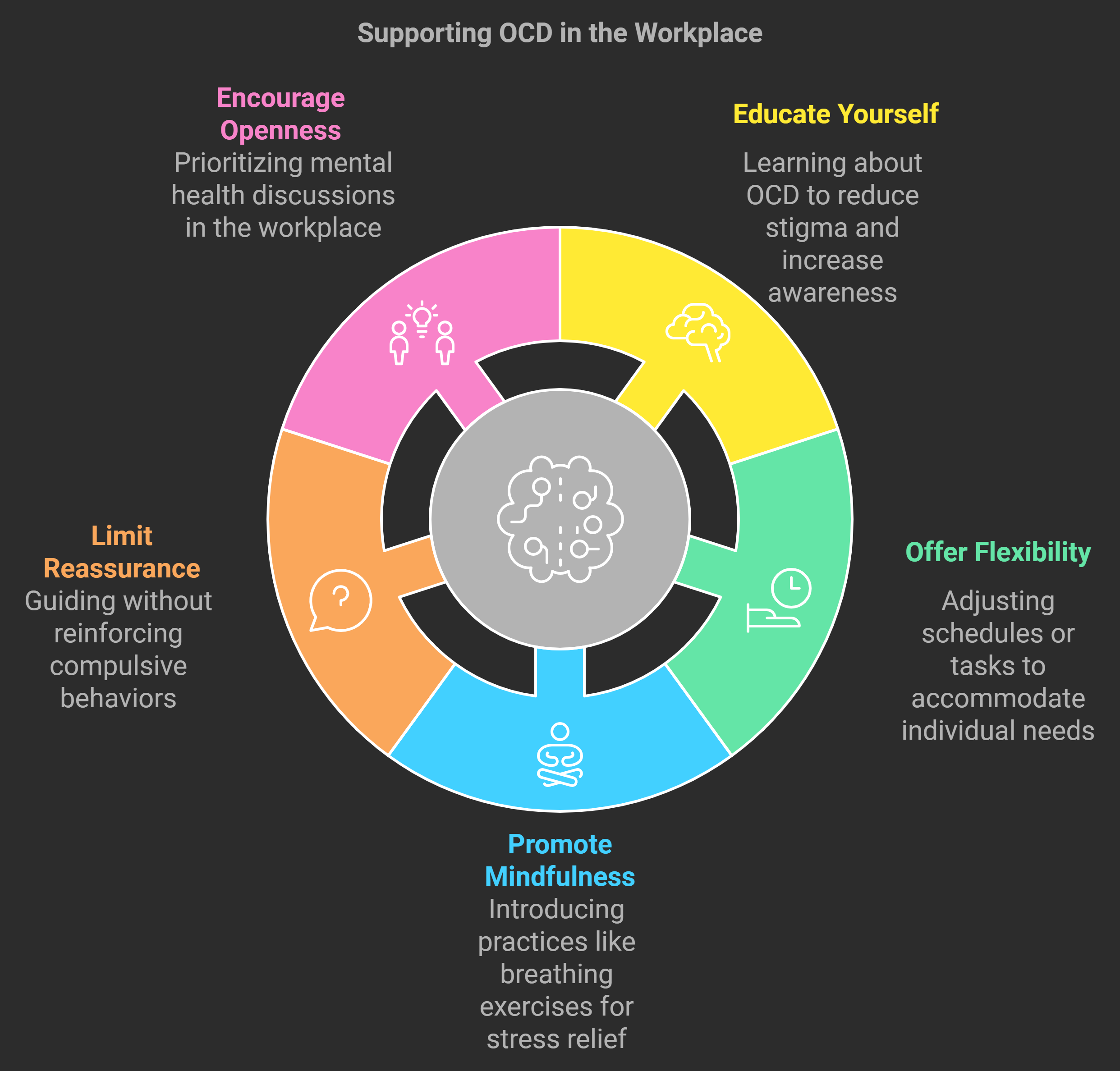
Obsessive-Compulsive Disorder (OCD) affects millions worldwide, yet it often goes misunderstood, especially within families. As a parent, understanding how OCD may show up in you or your child is essential to providing the proper support. OCD isn’t just about habits or routines; it’s a mental health condition involving repetitive, unwanted thoughts (obsessions) and actions (compulsions) that can take a toll on daily life.
Today, we’ll look at common OCD symptoms in both adults and children, explore how to spot the signs and share practical steps you can try at home to support your family’s mental health.
What is OCD?
Obsessive-Compulsive Disorder (OCD) is a condition that brings intrusive thoughts (obsessions) and repeated behaviours (compulsions). For those with OCD, these thoughts and actions feel impossible to ignore, even if they’re aware that they might seem unreasonable.
- In Yourself: Common obsessions might include fears of contamination or worries about safety, like constantly wondering if you’ve locked the door or left the stove on. These are often followed by compulsive actions, such as repetitive cleaning or checking behaviours. For example, an adult might repeatedly wash their hands until they feel “clean enough” or check the locks on their doors multiple times each night.
- In Your Child: OCD can show up as repetitive questions, such as constantly seeking reassurance or rituals like arranging toys in a specific order. Children might feel intense anxiety if they can’t complete these actions, which can impact school, friendships, and family life. For instance, a child may need to touch a particular object multiple times before leaving the house, fearing that something terrible will happen if they don’t.

Recognising the Signs of OCD in You or Your Child
Being aware of OCD symptoms is the first step.
Symptoms can vary between adults and children, but here are some common signs to watch for:
In Yourself (as a Parent):
- Repeatedly washing hands, checking doors, or counting objects to reduce stress. For example, you might feel compelled to recheck your front door multiple times to ensure it’s locked.
- Intrusive, distressing thoughts about safety, cleanliness, or harm, such as persistent worries about accidentally harming a loved one or fears of germs in everyday situations.
- Feeling compelled to complete tasks “just right” to relieve worry. This could look like arranging items in a specific, perfect way or redoing tasks if they don’t feel “right” the first time.
In Your Child:
- Children may have fearful thoughts they can’t shake, like worries about germs or getting hurt. They may believe they’ll get sick if they touch certain objects and might avoid everyday items or places.
- Asking the same question repeatedly, looking for reassurance, such as asking if a parent will come home safely or if a school project is good enough.
- Repeating specific actions, such as touching, counting, or arranging, to “make sure” things are okay. For instance, they might have a ritual of counting steps or touching the doorframe several times before entering a room.
Recognising these signs can help you understand if OCD might be affecting your family and guide you toward getting the right help.

Simple Steps to Support OCD at Home
There are practical ways to support yourself or your child in managing OCD symptoms.
1. Learn About OCD Together
Take time to understand OCD and share age-appropriate information with your child.
Knowing that these behaviours have a name and a reason behind them can provide comfort and reduce shame. For example, you could read a children’s book about OCD to help your child understand what they’re experiencing and to show them they’re not alone.
2. Set Up Routines for Stability
Consistent daily routines can provide a sense of predictability, helping reduce stress.
Plan regular times for meals, schoolwork, play, and relaxation to make the day feel more manageable. For example, if mornings trigger compulsions, having a routine can reduce the time and space for those compulsions to take hold.
3. Try Mindfulness and Relaxation Techniques
Simple practices like deep breathing, guided imagery, or focusing on a favourite object can help calm the mind.
Practising these together can make them more enjoyable and part of your daily routine. For instance, if your child becomes anxious in specific situations, you can try a “five senses” grounding exercise together: ask them to name five things they can see, four they can touch, three they can hear, two they can smell, and one they can taste.
4. Gently Reduce Reassurance-Seeking
Children may repeatedly seek reassurance, especially when feeling anxious.
Acknowledge their feelings, but gently encourage them to manage small worries independently. For example, if they keep asking if their room is clean enough, you could encourage them to decide after the first answer. Rather than giving in to repeated questions, respond calmly and help them build confidence in their ability to cope without constant reassurance.
5. Create a Supportive Environment for Sharing
It is essential to let your child know they can talk about any worries or rituals without judgment.
Try to be open and patient, even if the behaviours feel difficult to understand. A supportive home environment can make a big difference in how they think. For instance, if they’re embarrassed about a ritual, you might share that many people experience similar things and that you’re there to support them, no matter what.

When to Seek Professional Help
While these steps can help manage OCD symptoms, sometimes professional guidance is the next step.
Cognitive Behavioural Therapy (CBT), particularly Exposure and Response Prevention (ERP), is one of the most effective therapies for OCD.
ERP involves gradually exposing the person to their fears without allowing them to perform the compulsive behaviour, reducing the anxiety around the obsession over time.
If OCD symptoms start to interfere significantly with daily life, consider reaching out to ProActive Psychology for support. Visit our website to see if you’re eligible for one of our free programs: You In Mind (for adults) and Star4-Kids (for children).
Understanding OCD in yourself or your child can be the first step toward creating a supportive and balanced family life. By recognising symptoms, using simple strategies, and fostering open communication, you can help manage OCD effectively at home. Remember, even small actions can make a big difference in supporting mental health and well-being for the entire family.
References
American Psychiatric Association, 2013. Diagnostic and Statistical Manual of Mental Disorders (5th ed.). Arlington, VA: American Psychiatric Publishing.
Foa, E.B. and Andrews, L.W., 2006. If Your Adolescent Has an Anxiety Disorder: An Essential Resource for Parents. New York: Oxford University Press.
International OCD Foundation, 2023. What is OCD?. [online] Available at: https://iocdf.org/about-ocd/ [Accessed 11 Nov. 2024].
National Institute of Mental Health, 2023. Obsessive-Compulsive Disorder (OCD). [online] Available at: https://www.nimh.nih.gov/health/topics/obsessive-compulsive-disorder-ocd [Accessed 11 Nov. 2024].
Rapoport, J.L., 1989. The Boy Who Couldn’t Stop Washing: The Experience and Treatment of Obsessive-Compulsive Disorder. New York: Dutton.
Salkovskis, P.M. and Forrester, E., 2002. Understanding and Treating Obsessive-Compulsive Disorder. In: W. Dryden, ed. Handbook of Individual Therapy. London: SAGE Publications, pp. 280-300.


